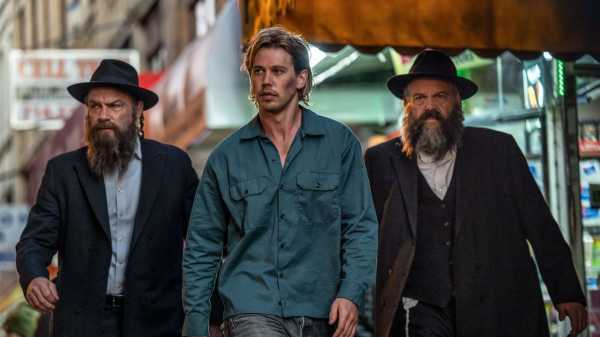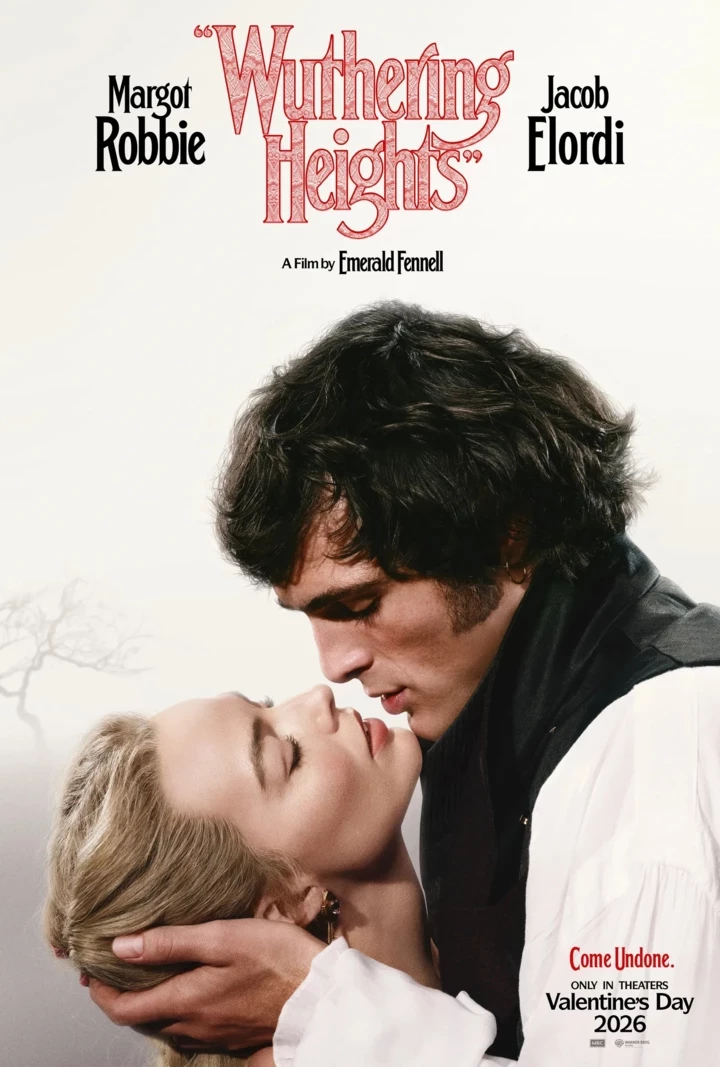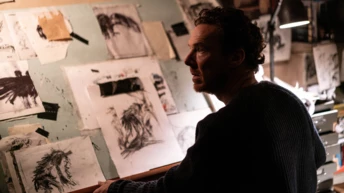
Save this storySave this storySave this storySave this story
From the start of Darren Aronofsky’s new film, “Caught Stealing,” it’s apparent that it hits the sweet spot of his cinematic artistry—the right scale, the right scope. Set in the summer of 1998, almost entirely in New York City, the movie begins in a Lower East Side bar at 4 A.M., where the bartender, Hank Thompson (Austin Butler), is dealing with a raucous group that’s breaking an absurd law—by dancing—and reminds them that Rudolph Giuliani, the zero-tolerance mayor, is indeed enforcing it. (It was a real thing; the last of the relevant laws was repealed only last year.) The film starts small, in a tight space, but the thrum of the city—its physical energy and its mighty administrative infrastructure—gives it a tension, a sense of ambient conflict that will, soon enough, turn an ordinary night into a neo-noir nightmare.
For Aronofsky, size matters, because one of the constants of his career is the conflict between order and chaos, a struggle for rational solutions to irrational realities. Too big (“Noah”) or too small (“The Whale”) or just erratic (“Mother!”) and that conflict becomes either unbalanced or unengaging. “Caught Stealing,” based on a novel by Charlie Huston (who also wrote the screenplay), nearly matches Aronofsky’s finest dramas of disorder and control, “Black Swan” and “The Wrestler,” especially in the way that it maps private lives onto public spaces. In Aronofsky’s cinematic universe, the ability to endure physical punishment functions as a touchstone for power, and, in his best work, torment takes on an intensely intimate dimension, creating extreme contrast with the larger dramatic landscape on which the action is stretched. “Black Swan” and “The Wrestler” both twist documentary realities and hallucinatory dangers into large-scale tangles as terrifying as they are psychologically revealing.
But “Caught Stealing” is bracingly different from those two peaks of Aronofsky’s career—their hot-blooded melodrama is replaced by lacerating comedy and high-relief artifice. A simple synopsis: Hank gets in big trouble, and causes others even bigger trouble, by the trivial decency of helping out a neighbor. After he closes up the bar for the night, he and his girlfriend, a paramedic named Yvonne (Zoë Kravitz), head to his apartment but are waylaid by Russ (Matt Smith), a mohawk-sporting British punk who lives across the hall. Russ is in a state of panic: he has to leave for London immediately, he explains, because his father has had a stroke, and he presses Hank to take care of his cat for a while. The next day, a pair of Russian gangsters, a tall one named Aleksei (Yuri Kolokolnikov) and a short one nicknamed Microbe (Nikita Kukushkin), come by looking for Russ and beat Hank nearly to death. In the hospital, Hank gets a visit from a police officer, Elise Roman (Regina King), but he’s still reeling and in no state to talk. That changes once he’s out of the hospital—lacking insurance, he ducks out before he’s fully recovered—and gets a threatening visit from the brutes. He calls Elise (or Roman, as everyone refers to her), and, as he spills what little he knows, she explains that Russ is a major drug dealer. What’s more, it soon becomes clear that making that call doesn’t shield him from danger but opens an ever-deepening vortex of chaos. The movie’s MacGuffin is a key that Russ had hidden and that Hank finds. To force him to hand it over, all the movie’s miscreants—headed by a pair of ultra-Orthodox Jewish brothers, Lipa (Liev Schreiber) and Shmully (Vincent D’Onofrio)—subject Hank to relentless rounds of physical and emotional torture.
A profusion of visual details and verbal touches highlight the grungy textures of a city still raw with the process of gentrification. The cast rattles off the snappy dialogue, jagged with tension and menace, in performances that wink just slyly enough at the wry, knowing way that the characters deploy—and embody—gangland stereotypes. Similarly, a combination of sharp-eyed location shooting and highly decorative production design makes recognizable places throughout the city, including downtown Manhattan, Coney Island, Brighton Beach, and Flushing Meadows Park, look like movie sets just waiting to be filled with horrific violence. In short, Aronofsky has it both ways, and for a cinematically effective reason: the movie is, at times, cartoonlike, because its pain is nearly unbearably authentic.
Hank, who grew up in California and has been in New York for eleven years, has a tragic backstory, which emerges, initially, in nightmares. A baseball star in his late teens, he expected to be drafted by a major-league team when, while driving, he caused a car crash that shattered him physically and also killed a close friend (D’Pharaoh Woon-A-Tai). His traumatic memories are heightened by the guilty knowledge that, at the time, it was the career he grieved more intensely. He remains baseball-obsessed, and, as his troubles spiral, his team, the San Francisco Giants, is battling the Mets for a playoff spot. He calls his mother daily to talk baseball; he also sends her money. His romance with Yvonne is sexy and playful, and she sweetly indulges his absurdly laddish ways: his fridge is filled with beer (he drinks one on awaking, his so-called breakfast of champions); the rest of the apartment is cluttered with open bottles, empty or not. But in venting his bitterness about the distance between the life he’d dreamed of and his current predicament, he unintentionally pushes Yvonne away. To make things worse, his pursuers, who also include a dealer called Colorado (Bad Bunny), vow to harm her and Hank’s mother if he doesn’t coöperate.
For Aronofsky, the city’s ethnic blend has no special claim on virtue; there seem to be as many criminal underworlds as there are demographic groups. Hank, in attempting to save himself, starts to act out a stereotype of his own, the Western loner who presumes to take on a hero’s mantle. Driven by a mix of stubbornness, pride, feral self-preservation, rage, and fear, he takes matters into his own hands—and, by insisting on doing things his way, he makes them immeasurably worse, in ways that he never imagined. Hank proves extraordinarily resourceful under mortal pressure but not resourceful enough—the bodies pile up. The ironies of his existence, and of existence at large, resound all the more clearly thanks to the presence of the two devout brothers, Lipa and Shmully: they apostrophize their brutalities in philosophical antiphons (“Sad world,” “Broken world”) and, while making mayhem on a Friday afternoon, just hours before sunset and the start of the Sabbath, they insist on delivering a challah to their grandmother (Carol Kane). After they unleash apocalyptic violence past sundown, they force Hank, who’s been unwilling to drive ever since his accident, to take the wheel. As one brother says, “We’re in enough trouble with Hashem already without driving on Shabbos.”
Whereas “Black Swan” and “The Wrestler” gained power from the audience’s total identification with tragic protagonists, “Caught Stealing” offers the rueful uncertainty of identification with a terminal fuckup. Hank, having already experienced life-changing failure, is also able to absorb beatings that would destroy most people, endure the agony, and leap back into action. Even as Hank’s wild-loner act wreaks havoc, Butler endows the character with abraded boyish charm, and this gap between affect and effect—notable also in the way that confidence-inspiring characters turn out to be among the worst villains—brings a sardonic, radically cynical edge to the story’s exciting, hectic pivots. “Caught Stealing” is laced with plenty of antic silliness, such as a nerdy neighbor named Duane (George Abud) whose plaintive declaration “I build websites” becomes a mocking refrain. Microbe, like a reject from a Quentin Tarantino film, continually dispenses fractured pop-culture clichés as he metes out violence. But the film’s oddball characters inhabit a genuinely frightening city, populated by hair-trigger survivalists and mutely terrified witnesses to horror. The brazen goofiness is applied to the movie’s howl of terror like smiley-face stickers on a gravestone.
What separates “Caught Stealing” from the very best of Aronofsky’s work is its image-making, which is rarely more than just functional. The cinematographer, Matthew Libatique, plunges into the tumult with avidity and precision. But there’s nothing here to rival “Black Swan” in its fixation on mirrors and eyes, nothing to match the pathos-laden closeups and the postindustrial palette of “The Wrestler.” Everything is moving too fast to be fixed in place with authoritative framings, and the action is so jittery and impulsive that it allows scant leeway for reflective moments; the foregrounded turmoil remains psychologically opaque. Those earlier movies were rich in natural symbols—dramatic elements that inspired images rich in philosophical overtones. The new one has none of that. Then again, the artifice of the film’s tone isn’t built for reflection, anyway, and its symbols aren’t found in any individual images but in the whole rollickingly monstrous shebang. “Caught Stealing” is a grand entertainment for a time of shame and guilt and corruption, of treacherous authority and brazen hypocrisy. ♦
Sourse: newyorker.com







